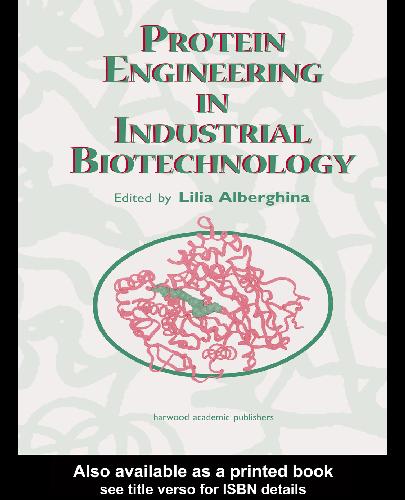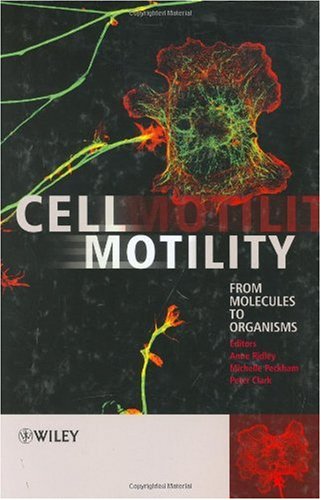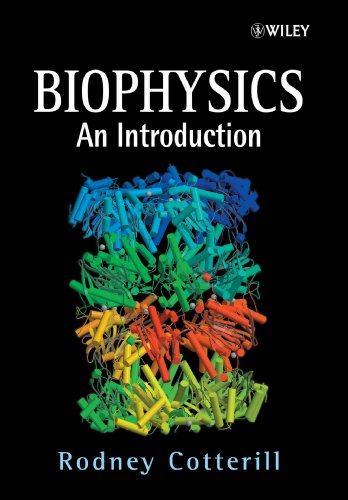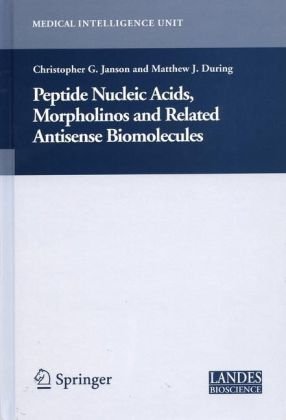L Alberghina,NetLibrary, Inc.0203303709, 9780203303702
Table of contents :
BOOK COVER……Page 1
HALF-TITLE……Page 2
TITLE……Page 3
COPYRIGHT……Page 4
CONTENTS……Page 5
PREFACE……Page 7
CONTRIBUTORS……Page 8
1. PROTEIN ENGINEERING IN BASIC ANDAPPLIED BIOTECHNOLOGY: A REVIEW……Page 14
ENABLING TECHNOLOGIES: HOW TO ENGINEER NEW PROTEIN FUNCTIONS……Page 15
Non-rational (random) design……Page 16
Combinatorial libraries and surface display……Page 18
Structures and modelling……Page 19
The role of biocomputing……Page 20
De novodesign……Page 21
How to affect protein conformation: medium engineering and bioimprinting……Page 22
Engineering Enzymes……Page 23
Engineering stability……Page 24
Engineering specificity……Page 25
Engineering Antibodies……Page 26
Industrial Enzymology……Page 27
Protein Engineering for Health Care……Page 29
REFERENCES……Page 31
The Protein Folding Problem……Page 35
Protein Folding in the Cell……Page 37
Inclusion Bodies……Page 38
Renaturation……Page 40
Disulfide Formation……Page 41
ENGINEERING PROTEINS TO FACILITATE RECOVERY……Page 43
REFERENCES……Page 45
INTRODUCTION……Page 52
CHOICE OF STREPTAVIDIN AS A TARGET……Page 54
ENGINEERING OF THE STREP-TAG PEPTIDE……Page 55
CRYSTALLOGRAPHIC ANALYSIS OF THE STREPTAVIDIN/STREP-TAG COMPLEXES……Page 57
ENGINEERING OF STREPTAVIDIN……Page 58
VECTOR SYSTEMS FOR THE PRODUCTION OF STREP-TAG FUSION PROTEINS……Page 61
APPLICATIONS FOR THE STREP-TAG……Page 62
CONCLUSIONS……Page 64
REFERENCES……Page 66
INTRODUCTION……Page 72
FUNGAL LIPASES……Page 73
A Closer Look: Sequence Analysis of CRLs and Related Lipases……Page 75
REDUNDANCY OF LIPASE PROTEINS IN C. RUGOSA……Page 77
THE UNUSUAL GENETIC CODE IN CANDIDA: ENGINEERING CRL TOWARDS EXPRESSION IN YEAST CELLS……Page 78
ACKNOWLEDGEMENTS……Page 80
REFERENCES……Page 81
5. STRUCTURE-FUNCTION STUDIES ONCUTINASE, A SMALL LIPOLYTIC ENZYME WITHA WATER ACCESSIBLE ACTIVE SITE……Page 84
The Overall Structure……Page 85
The Tertiary Fold……Page 86
Secondary Structure……Page 88
Hydrogen Bonds and Salt Bridges……Page 90
STRUCTURAL COMPARISON BETWEEN CUTINASE AND THE OTHER a/b HYDROLASE FOLD MEMBERS……Page 91
THE COVALENTLY INHIBITED COMPLEXES AND THE OXYANIONE HOLE……Page 93
The cut-E600 Complex……Page 95
The Oxyanion Hole Mutants……Page 98
The cut-TC4 Complex……Page 99
DYNAMICS OF CUTINASE AND PACKING FORCES……Page 106
Structural Comparison Among Different Crystal Forms of its Variants……Page 107
Packing Forces……Page 111
Implications for Protein Sterochemistry……Page 112
The Active Site Region……Page 113
CONCLUSIONS AND PERSPECTIVES……Page 114
REFERENCES……Page 117
INTRODUCTION……Page 123
BIOCHEMICAL PROPERTIES……Page 124
Overexpression and Purification……Page 125
The Function of the ROL Prosequence……Page 126
Primary Structure……Page 127
Secondary and Tertiary Structure……Page 128
PROTEIN ENGINEERING OF RHIZOPUS UPASES……Page 131
Lipid Modification……Page 132
Interesterification between triglycerides……Page 134
Preparation of MAG or DAG……Page 135
Organic Synthesis……Page 137
REFERENCES……Page 138
INTRODUCTION……Page 143
Flavour and Feed Industry……Page 144
Pulp and Paper……Page 145
DIFFERENT APPROACHES TO THE IMPROVEMENT OF LIPASE CATALYTIC ACTIVITY AND SELECTIVITY……Page 146
ENZYME ACTIVITY IN CONVENTIONAL ORGANIC SOLVENTS AND SUPERCRITICAL FLUIDS……Page 148
CONCLUSIONS……Page 152
REFERENCES……Page 153
INTRODUCTION……Page 155
STABILIZATION OF THE BACILLUS SUBTILIS NEUTRAL PROTEASE……Page 156
STABILIZATION OF THE PSEUDOMONAS ISOAMYLASE……Page 159
STABILIZATION OF CARBAMYLASE FROM AGROBACTERIUM RADIOBACTER……Page 161
REFERENCES……Page 164
CONSTRUCTION AND CHARACTERISATION OF CPD-Y MUTANTS……Page 166
Mutational Effects……Page 171
REFERENCES……Page 172
INTRODUCTION……Page 175
MODULES AND FAMILIES……Page 176
ENGINEERING b-GLYCOSIDE HYDROLASES……Page 177
Changing Thermal Stability……Page 178
Increasing the Catalytic Activity……Page 179
Changing the Stereospecificity……Page 181
Changing the Action……Page 182
Properties of CBDs……Page 183
CBDs in Protein Purification……Page 184
Enzyme Immobilization with CBDs……Page 185
REFERENCES……Page 186
INTRODUCTION……Page 195
MUTATIONAL ANALYSIS OF RESIDUES AT THE SITE OF CATALYSIS……Page 196
MUTATIONAL ANALYSIS OF SUBSTRATE BINDING RESIDUES……Page 199
Mutational Analysis of Residues Engaged in Protein-Carbohydrate Interactionsat Subsites -1 and +1……Page 200
Mutational Analysis of Residues at a Distance from the Site of Catalysis……Page 202
HOMOLOGUE LOOP REPLACEMENT MODULATES THE SUBSTRATE BOND-TYPE SPECIFICITY……Page 204
PROTEIN ENGINEERING TO ALTER THE STABILITY OF GLUCOAMYLASE……Page 206
REFERENCES……Page 209
OVERVIEW……Page 213
Chemical Stability of Homogalacturonans……Page 214
Plant Pathogenesis……Page 216
The Parallelb-helix Architecture of Pectate and Pectin Lyase……Page 217
Structural Conservation in Pectate and Pectin Lyases……Page 218
Pectate and Pectin Lyase have Different Carbohydrate Recognition Strategies……Page 220
A pH Driven Conformational Change in Pectin Lyase A……Page 223
How do Pectin and Pectate Lyase Work?……Page 225
New Families of Pectate Lyases……Page 227
Designer Pectins……Page 228
REFERENCES……Page 229
INTRODUCTION……Page 232
Properties, Structure, and Mechanism……Page 233
Transient Kinetic Studies……Page 234
The Kinetics of Halide Export……Page 236
Overall Kinetic Mechanism of Haloalkane Dehalogenase……Page 237
Mutants with Faster Conversion of 1,2-Dichloroethane and 1,2-Dibromoethane……Page 238
Molecular Modelling of Halide Ion Stabilization……Page 239
Comparison of Specificities and 3D Structures of Haloalkane Dehalogenases……Page 240
Possibilities for Further Improvement……Page 242
Specificity of Binding of Small Hydrophobic Molecules……Page 244
Engineering on Basis of Homologous Sequences……Page 245
REFERENCES……Page 246
INTRODUCTION……Page 250
Potential Assisted Self-Assembly and Molecularly Wired Redox Enzymes on theElectrode Surface……Page 253
Self-Assembly of Mediator-Modified Redox Enzymes on the Porous GoldElectrode Surface……Page 255
Genetic Engineering for Synthesis of Novel Functional Proteins……Page 256
Protein A-Luciferase Fusion Protein for Bioluminescent Enzyme Immunoassay……Page 257
RNA Binding Protein-Luciferase Fusion Protein……Page 259
Gene Expression Networking Responding Environmentally HazardousCompounds……Page 261
Self-Assembled Antibody Protein Array on Protein a Monolayer……Page 264
Genetically Engineered Calmodulin Self-Assembled on Solid Matrix andCoupled with PDE in Solution……Page 266
Genetically Engineered lipid-Tagged Antibody……Page 267
REFERENCES……Page 268
INTRODUCTION……Page 271
PERTUSSIS, CHOLERA AND E. COLI TOXINS: ADP-RIBOSYLTRANSFERASES WITH STRUCTURAL FEATURES IN COMMON……Page 272
Pertussis Toxin and Anti-Pertussis Vaccine……Page 273
E. coliHeat Labile Toxin (LT) and Mucosal Delivery of Vaccines……Page 274
REFERENCES……Page 277
INTRODUCTION……Page 280
SELECTION OF PEPTIDES MIMICKING SHIGELLA FLEXNERI LIPOPOLYSACCHARIDE……Page 282
MAPPING OF A DISCONTINUOUS EPITOPE OF HUMAN H FERRITIN……Page 283
MINIBODY……Page 285
HCV PROTEASE……Page 287
CONCLUSIONS……Page 289
REFERENCES……Page 291
INTRODUCTION……Page 295
Physiological Aspects……Page 296
Expression of Gastric Lipases inE. coli……Page 297
Expression of recombinant HGL (r-HGL)……Page 298
Substitutive Enzyme Therapy……Page 304
ACKNOWLEDGEMENTS……Page 306
REFERENCES……Page 307
SIGNAL TRANSDUCTION AND THERAPY OF PROLIFERATIVE DISORDERS……Page 310
THE RAS CYCLE AND ITS REGULATORS……Page 311
GEF……Page 312
THE RAS SIGNAL TRANSDUCTION CASCADE……Page 313
Ras Proteins and their Processing……Page 314
Deletion mutants……Page 315
Loss of function and gain of function mutants……Page 316
Dominant negative mutants……Page 317
FUTURE DIRECTIONS……Page 318
REFERENCES……Page 319
INTRODUCTION……Page 323
TYPE I MEMBRANE RECEPTORS……Page 324
Isolation of ECD-expressing Cell Lines and Soluble ECDs……Page 325
Characterization and Use of Soluble ECDs……Page 328
7-TRANSMEMBRANE RECEPTORS……Page 330
Receptor Cloning……Page 331
Isolation of High Receptor-Expressing Cell Lines……Page 332
SUMMARY……Page 334
REFERENCES……Page 336
ESTROGEN ACTION……Page 338
Structure and Function……Page 339
Coactivators……Page 342
Properties of ER ligands……Page 343
Ligand-Independent Activation of ER……Page 345
Animal Models……Page 346
Target Genes……Page 348
REFERENCES……Page 349
MECHANISM-BASED DRUG DISCOVERY……Page 354
How to Validate a Target……Page 357
Microinjection of plasmids and antibodies……Page 358
Biochemical mechanism of action……Page 359
The screening paradigm……Page 360
Lead discovery……Page 361
Combinatorial chemical libraries……Page 362
Cell based assays……Page 363
CONCLUSIONS……Page 364
REFERENCES……Page 365
INDEX……Page 367







Reviews
There are no reviews yet.